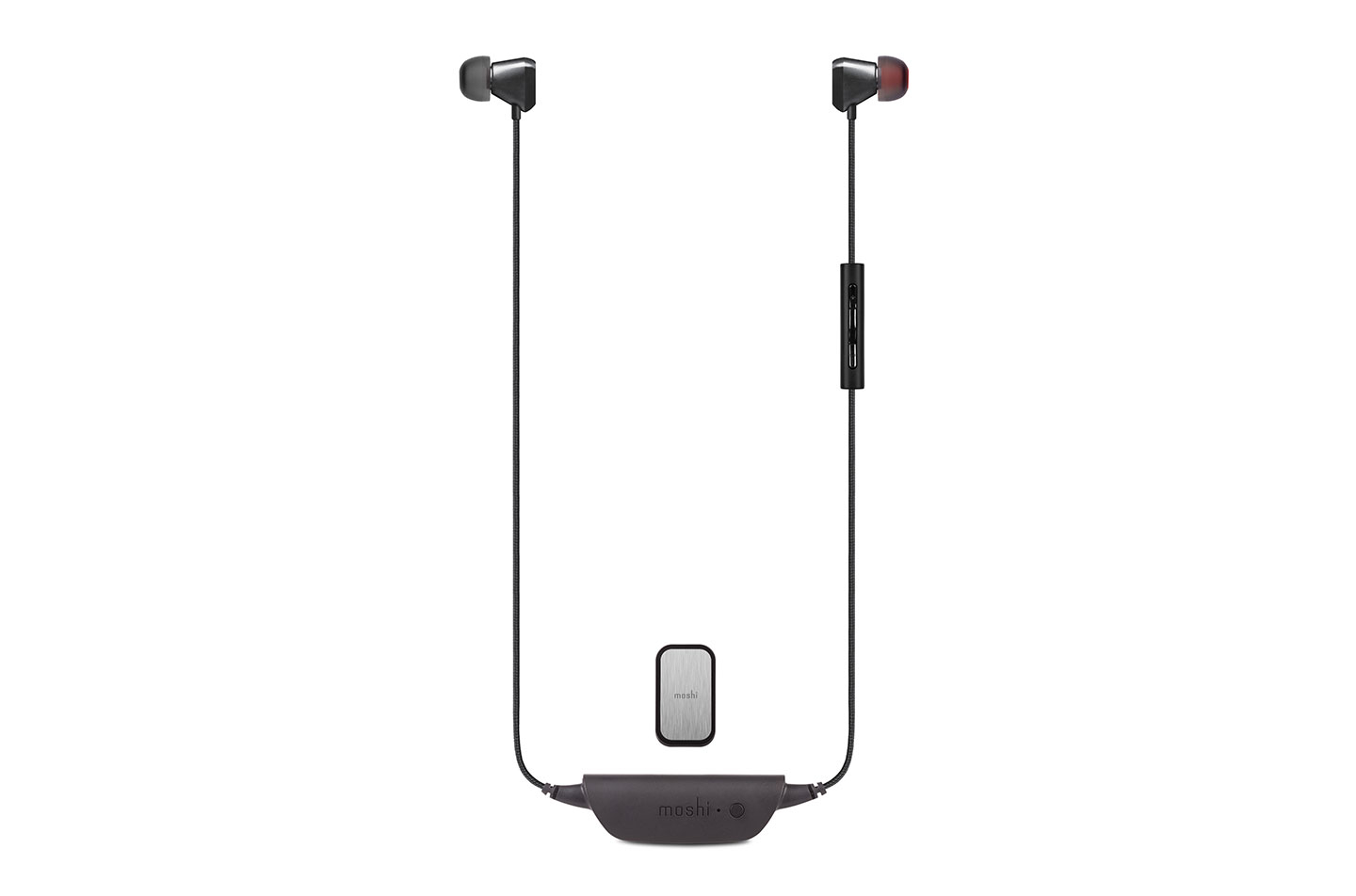- Apple's iPhone 7 did away with the analogue headphone jack and so signalled a sea change in the world of headphones. There's not exactly been a shortage of wireless or Bluetooth options in the past few years, but one can assume this market is in for some serious growth as more companies start to follow Apple's lead. One of the manufacturers to get into this game are the mobile accessory makers at Moshi. They recently released the Vortex Air Bluetooth headset and reached out to us offering the chance to test them out.
While Moshi's history in wired headphones is fairly robust, the Vortex Air is one of its first two wireless headsets. The Mythro Air is a more affordable alternative that lists for $69 compared with the Vortex Air, which retails for $119. Both headphones have a three-button mic and support Bluetooth 4.1, the latest standard that, among other things, allows the headphones to report battery status back to devices. On the topic of battery life, Moshi's wireless headphones boast a rather impressive eight hours of listening time, which I validated during my test. The build materials are the biggest difference between the two models. The Vortex Air uses a sintered steel housing and an HR8 neodymium driver that Moshi claims will provide "smooth highs and articulate bass with no distortion."
Moshi's high standard of build quality is clear from the time you open the Vortex Air's packaging. The centre base unit housing the Bluetooth electronics feels substantial and comes with a brushed metal magnetic clip for attaching to your collar, making everyday use of the headset more convenient than other Bluetooth models I've used. You can either leave the unit attached to the clip or pull it off as required. Then when you need the headphones again, just place them in the general area of the clip and they snap back into place. The cabling is wrapped in a fabric mesh that provides a reassuring sense of strength, and the earbuds have a bit of heft to them, likely thanks to the drivers. Three separate sizes of silicone tips come in the box, which should accommodate a variety of ear types, but I found the default ones fitted nicely.
Moshi also provides an app for iOS and Android that lets you manage the headset in various ways. You can rename the headphones, check the battery percentage and apply a custom five-band EQ response curve. This last feature is probably the most interesting. The EQ settings persist outside of the app and you can save your own presets. However, I noticed that the EQ settings occasionally disappeared over time or weren't loaded correctly by the app when it rebooted.
The last of the distinctive features that Moshi built into their wireless headphones is called DJ4Two, which mirrors audio to another set of Moshi headphones. This is orchestrated through the Moshi app, and the process is relatively straightforward: you start the DJ4Two module and then press twice on the power button of the second set of headphones. What's happening in the background here is that the main pair of headphones is acting both as a receiver and a transmitter, relaying the audio to the second pair. This would be most useful when traveling with another person (who happens to own Moshi headphones) and listening to music. However, the intrinsic latency caused by Bluetooth transcoding is effectively doubled by the DJ4Two system. This makes watching a movie or working on an audio production with another person something of a non-starter.
The topic of Bluetooth transcoding brings me to my final thought on the Vortex Air. Bluetooth has a relatively small amount of bandwidth and so usually audio has to be encoded using a lossy algorithm in order to be transmitted and then decoded for playback. Headphone makers handle this in different ways, with support for codecs providing varying levels of audio quality. Unlike many Bluetooth headphones that sit around the same price point, the Vortex Air does not support aptX—one of the most modern codecs developed for audio fidelity—but that's not a huge deal considering Apple products don't support it anyway. The Vortex Air does support AAC and SBC, which are pretty standard, but it seems like there's an issue somewhere in this area on Moshi's headphones. During my tests, I came away pretty underwhelmed by the sound quality overall. The high-end especially sounds over-compressed and flat, demonstrably worse than a $30 pair of Bluetooth headphones I was using as a comparison.
Moshi's wired headphones are widely accepted as having good sound, so it's likely the Bluetooth implementation is the weak link. It's a bit of a shame since the Vortex Air are otherwise really well designed. I would see these as a great every day set of headphones from a convenience and comfort perspective, but they fall short where it really counts: the sound.
Ratings:
Cost: 3.8
Versatility: 4.2
Ease of use: 4.2
Sound: 3.0
Build Quality: 4.3
